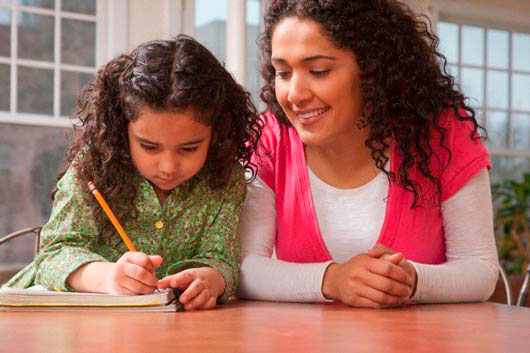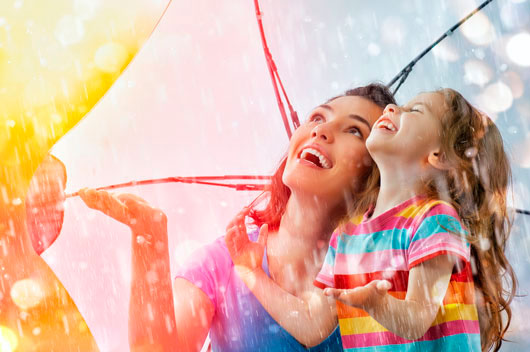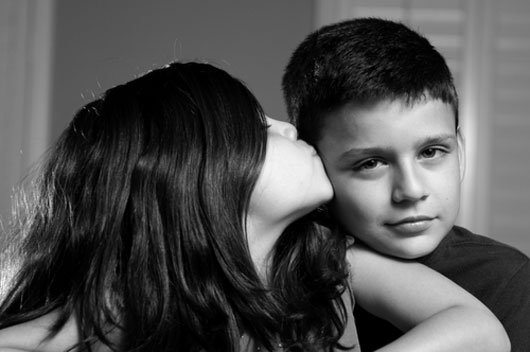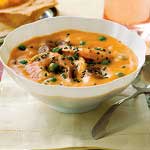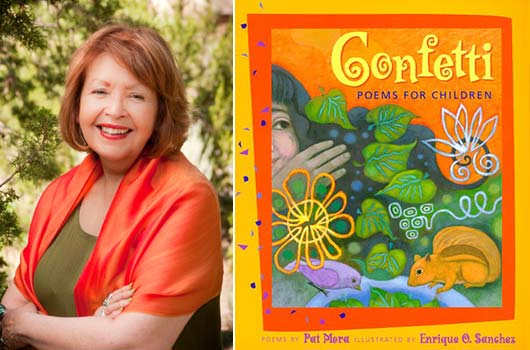
April marks two important celebrations for children’s literacy: National Poetry Month and Día de los Niños, Día de los Libros. Who better then, to speak about poetry and its importance in children’s literacy than author Pat Mora, who has not only published multiple poetry books for Latino children, but is also the founder of Día de los Niños here in the United States?
Her poetry books for children include Confetti: Poems for Children, Delicious Hullabaloo/Pachanga deliciosa, and The Desert is My Mother/El desierto es mi madre, just to name a few. Her rhymes are rich in imagery and are perfect for children. But Mora has also written books for teens (Dizzy in Your Eyes: Poems about Love) and adults (Adobe Odes).
Mamiverse: What has inspired you to write poetry for children?
Mora: When my children were little, together we enjoyed picture books so much that I longed to write them, too. I quickly learned how discouraging persistent rejection can be. No fun! I had loved poetry since I was young as did my teachers—most of whom were nuns—who had us memorize many poems. My first books were poetry for adults.
Years later, after I’d started publishing children’s books, at a conference a librarian asked, “Why do you write poetry for adults and not for children?” Great question. I scurried home and began my first book of poems for children, Confetti. A Spanish edition was also published. I now write books of rhymes and poetry for children, teens and adults.
Mamiverse: How does poetry play a role in children’s literacy?
Mora: Children love rhythm. Although not all poetry rhymes, most poetry has rhythm. I encourage families to read all kinds of poetry to children and to read it with enthusiasm. Make poetry fun! When children begin writing, encourage them to write and illustrate their own poems. Value their imagination and creative use of language. It’s a special treat to share and write bilingual and multicultural poetry.
Read Related: Top 10 Poetry Books for Kids
Mamiverse: You’ve written many books of poems for bilingual children. Is writing bilingual poetry more or less challenging than writing it in just one language?
Mora: Although I’ve always been bilingual, I’m English dominant. I was educated in English, taught English and much of my professional life has been in English. I also love the Spanish language and chat with students of all ages about the pleasure of having two languages to play in. More book-joy, alegría en los libros.
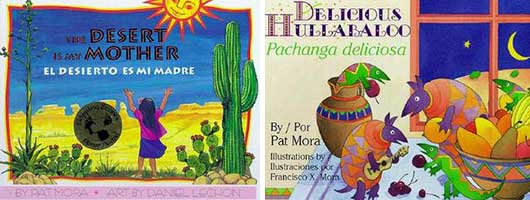
I write the first drafts of a poem in English and when I’m ready to end work on that poem, my editor sends it to a Spanish-dominant poet who also writes for children to do a first pass. I review that, and we go back and forth sometimes many times until I feel the poem in Spanish does what the poem in English does. Such translating is quite a challenge, even with a four-line poem for children.
Mamiverse: Who are your favorite Latino poets?
Mora: Latinos come from a rich poetic heritage. I think of the greats such as Sor Juana Inés de la Cruz, Pablo Neruda, Federico Garcia Lorca. I very much respect the poetry of U.S. contemporary poets for young people such as Gary Soto, Margarita Engle, and Francisco Alarcón.
Mamiverse: How can we incorporate bilingual and bicultural poetry in Día de los Niños celebrations?
Mora: April is National Poetry Month and since 1996, April has also been a season for the book festivals of El día de los niños, El día de los libros/Children’s Day, Book Day. Young people could read their poems at Día celebrations at home, schools or libraries. Young poets could also perform a poem or poems.
Poetry is my favorite genre. It’s not taught or enjoyed at schools as it was in the past. Celebrate the young poets you know!




